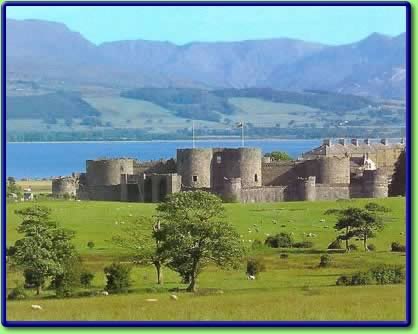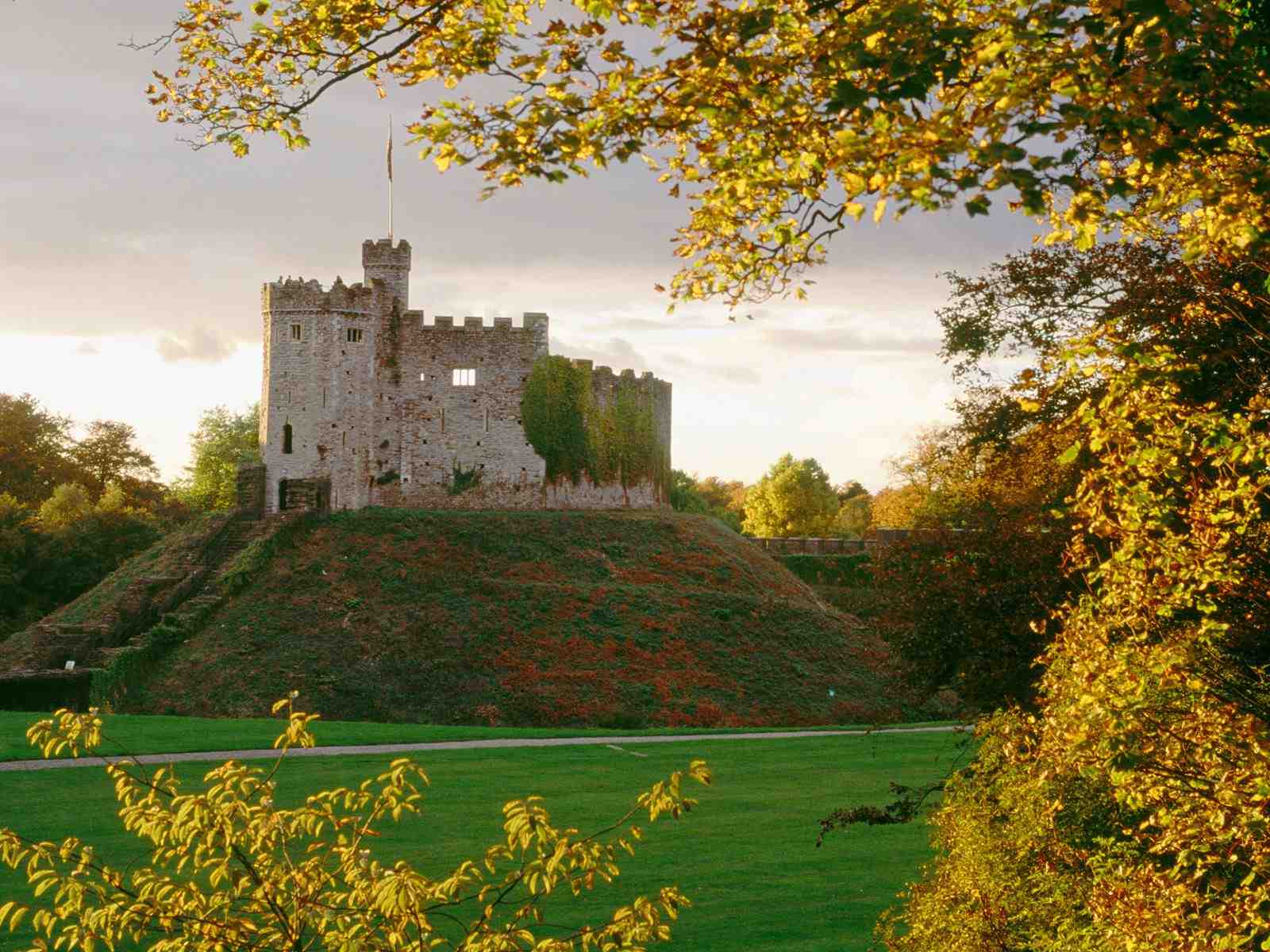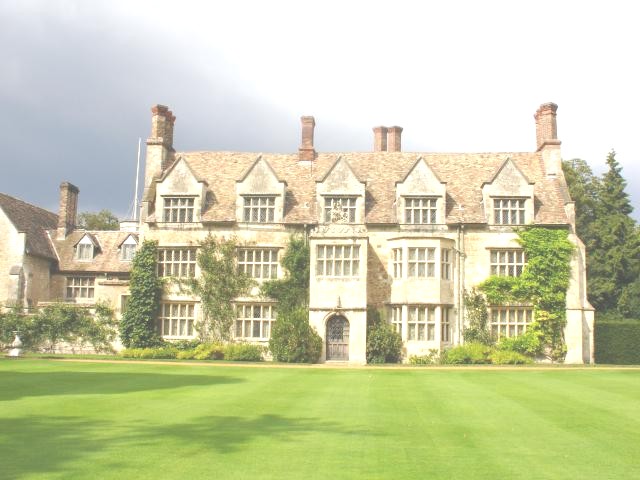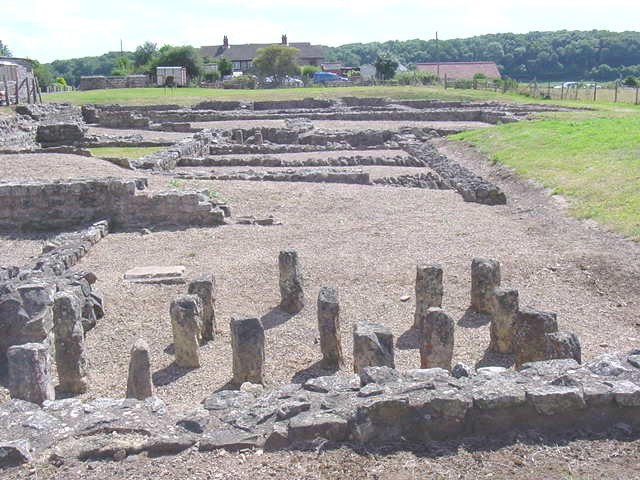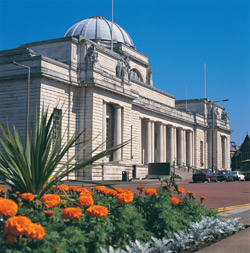The Theosophical Society,
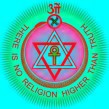
The Writings of Annie Besant

(1847 -1933)
Jainism
by
Annie Besant
Brothers:
We shall find ourselves
this morning in a very different atmosphere from that in which we were
yesterday, and in which we shall be tomorrow. We shall not now have around us
the atmosphere of romance, of chivalry, that we find both in the faith of Islam
and in that of the Sikhs. On the contrary we shall be in a calm, philosophic,
quiet atmosphere. We shall find ourselves considering the problems of human
existence looked at with the eye of the philosopher, of the metaphysician, and
on the other hand the question of conduct will take up a large part of our
thought; how man should live: what is his relation to the lower creatures
around him; how he should so guide his life, his actions, that he may not
injure, that he may not destroy. One might almost sum up the atmosphere of
Jainism in one phrase, that we find in the Sutra Kritănga, [iii,
20] that man by injuring no living creature reaches the Nirvana which is
peace. That is a phrase that seems to carry with it the whole thought of the
Jaina: peace - peace between man and man, peace between man and animal, peace
everywhere and in all things, a perfect brotherhood of all that lives. Such is
the ideal of the Jaina, such is the thought that he endeavors to realize upon
earth.
Now the Jainas
are comparatively a small body; they only number between one and two million
men; a community powerful not by its numbers, but by its purity of life, and
also by the wealth of its members — merchants and traders for the most part.
The four castes of the Hindus are recognized by the Jainas, but you will how
find few Brahmanas among them; few also of the Kshatriyas, which caste seems
wholly incompatible with the present ideas of the Jainas, though, their Jinas
are all Kshatriyas. The vast mass of them are Vaishyas — traders, merchants and
manufacturers — and we find them mostly gathered in Rajputana, in Guzerat, in
Kathiawar; scattered indeed also in other parts, but the great Jaina
communities may be said to be confined to these regions of India. Truly it was
not so in the past, for we shall find presently that they spread, especially at
the time of the Christian Era, as well as before it and after it, through the
whole of Southern India; but if we take them as they are today, the provinces
that I mentioned may be said practically to include the mass of the Jainas.
There is one
point with regard to the castes which separates them from Hinduism. The
Sannyăsî of the Jaina may come from any caste. He is not restricted, as in
ordinary orthodox Hinduism, to the Brahmana caste. The Yati may come from any
of the castes, and of course as a rule comes from the Vaishya, that being the
enormously predominating caste among the Jainas.
And now with
regard to their way of looking at the world for a moment; and then we will
consider the great Being, who is spoken of in western orientalism, not by
themselves, as the Founder.
They have the same
enormous cycles of time that we are familiar with in Hinduism; and it must be
remembered that both the Jaina and the Buddhist are fundamentally offshoots
from ancient Hinduism; and it would have been better had men not been so
inclined to divide, and to lay stress on differences rather than similarities —
if both these great offshoots had remained as Darsanas of Hinduism, rather than
have separated off into different, and as it were rival, faiths. For a long
time among the occidental scholars, Jainism was looked on as derived from
Buddhism. That is now admitted to be a blunder and both alike derive from the
more ancient Hindu faith; and in truth there are great differences between the
Jaina and the Buddhist, although there be also similarities, likenesses of
teaching. There is however no doubt at all, if you will permit me to speak
positively, that Jainism in
Twenty-four of
these appear in each great cycle, and, if you take the Kalpa Sutra
of the Jainas, you will find in that the lives of these Jinas. The life of the
only one which is given there at all fully — and the fullness is of a very
limited description — is that of the twenty-fourth and last, He who was called
Mahăvîra, the mighty Hero. He stands to the Jaina as the last representative of
the Teachers of the world; as I said, He is contemporary with Săkhya Muni, and
by some He is said to be His kinsman. His life was simple, with little incident
apparently, but great teachings. Coming down from loftier regions to His latest
incarnation, that in which He was to obtain illumination, He at first guided
His course into a Brahmana family, where, it would seem from the account given,
He had intended to take birth; but Indra, the King of the Devas, seeing the
coming of the Jina, said that it was not right that He should be born among the
Brahmanas, for ever the Jina was a Kshatriya and in a royal house must He be
born. So Indra sent one of the Devas to guide the birth of the Jina to the
family of King Siddhărtha, in which He was finally born. His birth was
surrounded by those signs of joy and delight that ever herald the coming of one
of the great Prophets of the race — the songs of the Devas, the music of
Gandharvas, the scattering of flowers from heaven — these are ever the
accompaniments of the birth of the one of Saviors of the world. And the Child
is born amid these rejoicings, and since, after His conception in the family,
the family had increased in wealth, in power, in prosperity, they named Him
Vardhamăna — the Increaser of the prosperity of his family. He grew up as a
boy, as a youth, loving and dutiful to His parents; but ever in His heart the
vow that He had taken, long lives before, to renounce all, to reach
illumination, to become a Savior of the world. He waits until father and mother
are dead, so that He may not grieve their hearts by the leaving; and then,
taking the permission of His elder brother and the royal councillors, He goes
forth surrounded by crowds of people to adopt the ascetic life. He reaches the
jungle; He pulls off his robes, the royal robes and royal ornaments; He tears
out his hair; He puts on the garment of the ascetic; He sends away the royal
procession that followed Him, and plunges alone into the jungle. There for
twelve years He practices great austerities, striving to realize Himself and to
realize the nothingness of all things but the Self; and in the thirteenth year
illumination breaks upon Him, and the light of the Self shines forth upon Him,
and the knowledge of the Supreme becomes His own. He shakes off the
bonds of Avidyă and becomes the omniscient, the all-knowing; and then He comes
forth as Teacher to the world, teaching for forty-two years of perfect life.
Of the
teachings, we are here told practically nothing; the names of some disciples
are given; but the life, the incidents, these are all omitted. It is as though
the feeling that all this is illusion, it is nothing, it is naught, had passed
into the records of the Teacher, so as to make the outer teaching as nothing,
the Teacher Himself as nothing. And then He dies after forty-two years of
labor, at Păpă 526 years before the birth of Christ. Not very much, you see, to
say about the Lord Mahăvîra; but His life and work are shown in the philosophy
that He left, in that which He gave to the world, though the personality is
practically ignored.
Before him,
1,200 years, we are told, was the twenty-third of the Tirthamkaras, and then,
84,000 years before Him, the twenty-second and so on backwards and backwards in
the long scroll of time, until at last we come to the first of These,
Rishabhadeva, the father of King Bharata, who gave to India its name. There the
two faiths, Jainism and Hinduism, join, and the Hindu and the Jaina together
revere the Great One who, giving birth to a line of Kings, became the Rishi and
the teacher.
When we come to
look at the teaching from the outside — I will take the inside presently — we
find certain canonical Scriptures, as we call them, analogous to the Pitakas of
the Buddhists, forty-five in number; they are the Siddhănta, and they were
collected by Bhadrabăka, and reduced to writing, between the third and fourth
centuries before Christ. Before that, as was common in India, they were handed
down from mouth to mouth with that wonderful accuracy of memory which has ever
been characteristic of the transmission of Indian Scriptures. Three or four
hundred years before the reputed birth of Christ, they were put into writing, reduced,
the western world would say, to a fixed form. But we know well enough it was no
more fixed than in the faithful memories of the pupils who took them from the
Teacher; and even now as Max Müller tells us, if every Veda were lost they
could be textually reproduced by those who learn to repeat them. So the
Scriptures, the Siddhănta, remained written, collected by Bhadrabăka, at this
period before Christ. In A.D. 54 a council was held, the Council of Valabhi,
where a recension of these Scriptures was made, under Devard-digamin, the
Buddhaghosha of the Jainas. There are forty-five books, as I said; II Angas, 22
Upăngas, 10 Pakinnakas, 6 Chedas, 4 Műla-sűtras, and 2 other Sűtras. This makes
the canon of the Jaina religion, the authoritative Scripture of the faith.
There seem to have been older works than these, which have been entirely lost,
which are spoken of as the Pűrvas, but of these, it is said, nothing is known.
I do not think that that is necessarily true. The Jainas are peculiarly
secretive as to their sacred books, and there are masterpieces of literature,
among the sect of Digambaras, which are entirely withheld from publication; and
I shall not be surprised if in the years to come many of these books, which are
supposed to be entirely lost, should be brought out, when the Digambaras have
learnt that, save in special cases, it is well to spread abroad truths, that
men may have them. Secretiveness may be carried so far as to be a vice, beyond
the bounds of discretion, beyond the bounds of wisdom.
Then outside the
canonical Scriptures there is an enormous literature of Purănas and Itihăsas,
resembling very much the Purănas and Itihăsas of the Hindus. They are said, I
know not whether truly or not, to be more systematized than the Hindu versions;
what is clear is that in many of the stories there are variations, and it would
be an interesting task to compare these side by side, and to trace out these
variations, and to try and find the reasons that have caused them.
So much for what
we may call their special literature; but when we have run over that, we find
that we are still faced by a vast mass of books, which, although originating in
the Jaina community, have become the common property of all India — grammars,
lexicons, books on rhetoric and on medicine — these are to be found in immense
numbers and have been adopted wholesale in India. The well-known Amarakosha,
for instance, is a Jaina work that every student of Sanskrit learns from
beginning to end.
I said the
Jainas came to Southern India — spreading downwards through the whole of the
southern part of the peninsula; we find them giving kings to Madura, to
Trichinopoly and to many another city in Southern India. We find not only that
they thus give rulers; but we find they are the founders of Tamil literature.
The Tamil grammar, said to be the most scientific grammar that exists, is a
Jaina production. The popular grammar, Nămal, by Pavanandi, is Jaina, as
is Năladiyăr. The famous poet Tiruvalluvar's Kural, known I
suppose to every Southerner, is said to be a Jaina work, for this reason, that
the terms he uses are Jaina terms. He speaks of the Arhats; he uses the
technical terms of the Jaina religion, and so he is regarded as belonging to
the Jaina faith.
The same is true
of the Canarese literature; and it is said that from the first century of the
Christian Era to the twelfth, the whole literature of Canara is dominated by
the Jainas. So great then were they in those days.
Then there came
a great movement throughout Southern India, in which the followers of Mahădeva,
Siva, came preaching and singing through the country, appealing to that deep
emotion of the human heart, Bhakti, which the Jaina had too much ignored.
Singing stotras to Mahădeva they came, chanting His praises, especially working
cures of diseases in His name, and before these wonderful cures and the rush of
the devotion which was aroused by their singing and preaching, many of the
Jainas were themselves converted; the remainder of them were driven away, so
that in Southern India they became practically non-existent. Such is their
story in the South; such the fashion of their vanishing.
In Rajputana,
however, they remained, and so highly were they respected that Akbar, the
magnanimous Musalmăn emperor, issued an edict that no animals, should be killed
in the neighbourhood of Jaina temples.
The Jainas are
divided, we may add, into two great sects — the Digambaras, known in the fourth
century B.C., and mentioned in one of Asoka's edicts; the Svetambaras,
apparently more modern. The latter are now by far the more numerous, but it is
said that the Digambaras possess far vaster libraries of ancient literature
than does the rival sect.
Leave that
historical side; let us now turn to their philosophic teaching. They assert two
fundamental existences, the root, the origin, of all that is, of Samsăra; these
are uncreated, eternal. One is Jîva or Atma, pure consciousness, knowledge, the
Knower, and when the Jîva has transcended Avidyă, ignorance, then he realizes
himself as the pure knowledge that he is by nature, and is manifested as the
Knower of all that is. On the other hand Dravya, substance, that which is
knowable; the Knower and the Knowable opposed one to the other; Jîva and
Dravya. But Dravya is to be thought of as always connected with Guna, quality.
Familiar enough, of course, are all these ideas to you, but we must follow them
one by one. With Dravya is not only Guna, quality, but Paryăya, modification.
“ Substance is
the substrate of qualities; the qualities are inherent in one substance; but
the characteristic of developments is that they inhere in either.
“Dharma,
Adharma, space, time, matter and souls (are the six kinds of substances), they
make up this world, as has been taught by the Jinas who possess the best
knowledge.” [Uttaradhyayana, xxviii, 6, 7. Translated from the
Prakrit, by Hermann Jacobi]
Here you have
the basis of all Samsara; the Knower and the Knowable, Jîva and Dravya with its
qualities and its modifications. This makes up all. Out of these principles
many deductions, into which we have not the time to go; I may give you,
perhaps, one, taken from a Gătha of Kundăcărya, which will show you a line of
thought not unfamiliar to the Hindu. Of everything, they say, you can declare
that it is, that it is not, that it is and is not. I take their own example,
the familiar jar. If you think of the jar as Paryăya, modification, then before
that jar is produced, you will say: “Syănnăsti” it is not. But if you think of
it as substance, as Dravya, then it is always existing, and you will say of it:
“Syădasti”, it is; but you can say of it as Dravya and Paryăya, it is not
and it is, and sum up the whole of it in a single phrase: “Syădasti năsti”; it is and it
is not.[Report of the Search for Sanskrit MSS BY Dr Bhandarkar, p
95] Familiar line of reasoning enough. We can find dozens, scores and
hundreds of illustrations of this way of looking at the universe, wearisome,
perhaps, to the ordinary man, but illuminative and necessary to the
metaphysician and the philosopher.
Then we come to
the growth, or rather the unfolding, of the Jîva. The Jîva evolves, it is
taught, by Reincarnation and by Karma; still, as you see, we are on very
familiar ground. “The universe is peopled by manifold creatures who are in
this Samsăra, born in different families and castes for having done various
actions. Sometimes they go to the worlds of the Gods, sometimes to the hells,
sometimes they become Asuras, in accordance with their actions. Thus living
beings of sinful actions who are born again and again in ever-recurring births,
are not disgusted with Samsăra.” [Uttaradhyayana, iii, 2, 3,
5] And it teaches exactly as you read in the Bhagavad-Gîtă that
the human being goes downwards by evil action; by mixed good and evil he will
be born as a man; or, if purified, will be born as a Deva. Exactly on these
lines the Jaina teaches. It is by many births, by innumerable experiences, the
Jîva begins to liberate himself from the bonds of action. We are told that
there are three jewels, like the three ratnas that we so often hear of among
the Buddhists; and these are said to be right knowledge, right faith, right
conduct, a fourth being added for ascetics: “Learn the true road leading to
final deliverance, which the Jinas have taught; it depends on four causes, and
is characterized by right knowledge and faith. I. Right knowledge; II. Faith;
III. Conduct; IV. Austerities. This is the road taught by the Jinas who possess
the best knowledge.” [Ibid, xxviii, 1, 2]
By right knowledge and right faith and right conduct the Jîva evolves, and in
the later stages, to these are added austerities, by which he finally frees
himself from the bonds of rebirth. Right knowledge is defined as being that
which I have just said to you with regard to Samsăra; and the difference of Jîva
and Dravya, and the six kinds of substances, Dharma, Adharma, space, time,
matter, soul; he must also know the nine truths: Jiva, soul; Ajîva, the
inanimate things; Bandha, the binding of the soul by karma; Punya, merit; Păpa,
demerit; Âsrăva, that which causes the soul to be affected by sins; Samvara,
the prevention of Âsrăva by watchfulness; the annihilation of Karma; final
deliverance; these are the nine truths.[Uttaradhyayana, xxviii,
14]
Then we find a
definition as to right conduct. Right conduct, which is Sarăga, with desire,
leads to Svarga — or it leads to becoming a Deva, or it leads to the
sovereignty of the Devas, Asuras and men, but not to liberation. But the right
conduct which is Vîtarăga, free from desire, that, and that alone, will lead to
final liberation. As we still follow the course of the Jîva, we find him
throwing aside Moha, delusion, Răga, desire, Dvesha, hatred, and of course
their opposites, for the one cannot be thrown off without the other; until at
last he becomes the Jîva complete and perfect, purified from all evil,
omniscient, omnipotent and omnipresent, the whole universe reflected in himself
as in a mirror, pure consciousness, “with the powers of the senses, though
without the senses”; pure consciousness, the knower, the
Supreme.
Such then is a
brief outline of the views, the philosophic views, of the Jainas, acceptable
surely to every Hindu, for on almost every point you will find practically the
same idea, though put sometimes in a somewhat different form.
Let us look more
closely at right conduct, for here the Jaina practice becomes specially
interesting; and wise are many of his ways, in dealing especially with the life
of the layman. Jainas are divided into two great bodies: the layman, who is
called a Srăvaka, and the ascetic, the Yati. These have different rules of
conduct in this sense only, that the Yati carries to perfection that for which
the layman is only preparing himself in future births. The five vows of the
Yati which I will deal with in a moment, are also binding on the layman to a
limited extent. To take a single instance: the vow of Brahmacarya, that on the
Yati imposes of course absolute celibacy, in the layman means only temperance
and proper chastity in the life of a Grhastha. In this way the vows, we may
say, run side by side, of Ahimsa, harmlessness, Sűnriti, truthfulness, Asteya,
not taking that which is not one's own, uprightness, honesty, Brahmacarya, and
finally Aparigraha, not grasping at anything, absence of greed — in the case of
the layman meaning that he is not to be covetous, or full of desire; in the
case of the Yati meaning of course that he renounces everything and knows
nothing as “mine”, “my own”. These five
vows, then, rule the life of the Jaina. Very, very marked is his translation of
the word Ahimsa, harmlessness: “thou shalt not kill”. So far does
he carry it in his life, to such an extreme, that it passes sometimes almost
beyond the bounds of virtue; passes, a harsh critic might say, into absurdity;
but I am not willing so to say, but rather to see in it the protest against the
carelessness of animal life and animal suffering, which is but too widely
spread among men; a protest, I admit, carried to excess, all sense of
proportion being lost, the life of the insect, the gnat, sometimes being
treated as though it were higher than the life of a human being. But still,
perhaps, that may be pardoned, when we think of the extremes of the cruelty to
which so many permit themselves to go; and although a smile may sometimes come when
we hear of breathing only through a cloth, as the Yati does, as he breathes
continually touching the lips that nothing living may go into the lungs;
straining all water and most unscientifically boiling it — which really
“kills creatures, which if water remained unboiled would remain alive — the
smile will be a loving one, for the tenderness is beautiful. Listen for a
moment to what was said by a Jina, and would to God that all men would take it
as a rule of life: “The venerable One has declared ... As is my pain when I
am knocked or struck with a stick, bow, fist, clod, or potsherd; or menaced,
beaten, burned, tormented, or deprived of life; and as I feel every, pain and
agony, from death down to the pulling out of a hair; in the same way, be sure of
this, all kinds of beings feel the same pain and agony, etc., as I, when living
they are ill-treated in the same way. For this reason all sorts of living
beings should not be beaten, nor treated with violence, nor abused, nor
tormented, nor deprived of life. I say the Arhats and Bhagavats of the past,
present and future, all say thus, speak thus, declare thus, explain thus; all
sorts of living beings should not be slain, nor treated with violence, nor
abused, nor tormented, nor driven away. This constant, permanent, eternal, true
law has been taught by wise men who comprehend all things.” [Uttaradhyayana,
Bk II, i, 48, 49]
If that were the
rule for every one, how different would India be; no beaten and abused animal;
no struggling, suffering creature; and for my part, I can look almost with
sympathy even on the Jaina exaggeration, that has a basis so noble, so
compassionate; and I would that the feeling of love, though not the
exaggeration, should rule in all Indian hearts of every faith today.
Then we have the
strict rule that no intoxicating; drug or drink may be touched; nothing like
bhang, opium, alcohol; of course nothing of this kind is allowed; even so far
as honey and butter does the law of forbidden food go, because in the gaining
of honey the lives of bees are too often sacrificed, and so on. Then we find in
the daily life of the Jaina rules laid down for the layman as to how he is to
begin and end every day:
“He must rise
very very early in the morning and then he must repeat silently his mantras,
counting its repetition on his fingers; and then he has to say to himself, what
am I, who is my Ishtadeva, who is my Gurudeva, what is my religion, what should
I do, what should I not do? ” This is the beginning of each day, the
reckoning up of life as it were; careful, self-conscious recognition of life.
Then he is to think of the Tirthamkaras, and then he is to make certain vows.
Now these vows are peculiar, as far as I know, peculiar to the Jainas,
and they have an object which is praiseworthy and most useful. A man at his own
discretion makes some small vow on a thing absolutely unimportant. He will say
in the morning: “During this day” — I will take an extreme case given to me
by a Jaina — “during this day I will not sit down more than a certain number
of times”; or he will say: “For a week I will not eat such and such a
vegetable”; or he will say: “For a week, or ten days, or a month, I will
keep an hour's silence during the day”. You may say: Why? In order that the man
may always be self-conscious, and never lose his control over the body. That is
the reason that was given me by my Jaina friend, and I thought it an extremely
sensible one. From young boyhood a boy is taught to make such promises, and the
result is that it checks thoughtlessness, it checks excitement, it checks that
continual carelessness, which is one of the great banes of human life. A boy
thus educated is not careless. He always thinks before he speaks or acts; his
body is taught to follow the mind and not to go before the mind, as it does too
often. How often do people say: “ If I had thought, I would not have done it;
if I had considered, I would never have acted thus; if I had thought for a
moment that foolish word would not have been spoken, and that harsh speech
would never have been uttered, that discourteous action would never have been
done.” If you train yourself from childhood never to speak without
thinking, never to act without thinking, see how unconsciously the body would learn
to follow the mind, and without struggle and effort, carelessness would be
destroyed. Of course there are far more serious vows than these taken by the
layman as to fasting, strict and severe, every detail carefully laid down in
the rules, in the books. But I was telling you a point that you would not so
readily find in the books, so far as I know and that seemed to me to be
characteristic and useful. Let me add that when you meet Jainas you will find
them, as a rule, what you might expect from this training — quiet,
self-controlled, dignified, rather silent, rather reserved. [The details
here given are mostly from the Jainatattvădarsha, by Muni Atmărămji, and
were translated from the Prakrit for me by my friend Govinda Dasa]
Pass from the
layman to the ascetic, the Yati. Their rules are very strict. Much of fasting,
carried to an extraordinary extent, just like the fasting of the great ascetics
of the Hindu. There are both men and women ascetics among the sect known as the
Svetămbaras; among the Digambaras there are no female ascetics and their views
of women are perhaps not on the whole very complimentary. Among the
Svetămbaras, however, there are female ascetics as well as male, under the same
strict rules of begging, of renouncing of property; but one very wise rule is
that the ascetic must not renounce things without which progress cannot be
made. Therefore he must not renounce the body; he must beg food enough to
support it, because only in the human body can he gain liberation. He must not
renounce the Guru, because without the teaching of the Guru he cannot tread the
narrow razor path; nor discipline, for if he renounces that, progress would be
impossible; nor the study of the Sűtras, for that also is needed for his
evolution; but outside these four things — the body, the Guru, discipline,
study — there must be nothing of which he can say: “it is mine”. Says a
teacher: “He should not speak unasked, and asked he should not tell a lie; he
should not give way to his anger, and should bear with indifference, pleasant
and unpleasant occurrences. Subdue your self, for the self is difficult to
subdue; if your self is subdued, you will be happy in this world and in the
next.”[Uttaradhyayana,
i, 14, 15]
The female
ascetics, living under the same strict rule of conduct, have one duty which it
seems to me is of the very wisest provision; it is the duty of female ascetics
to visit all the Jaina households, and to see that the Jaina women, the wives
and the daughters, are properly educated, properly instructed. They lay great
stress on the education of the women, and one great work of the female ascetic
is to give that education and to see that it is carried out. There is a point
that I think the Hindu might well borrow from the Jaina, so that the Hindu women
might be taught without the chance of losing their ancestral faith, or
suffering interference with their own religion, taught by ascetics of their own
creed. Surely no vocation can be nobler, surely it would be an advantage to
Hinduism.
And then how is
the ascetic to die? By starvation. He is not to wait until death touches him;
but when he has reached that point where in that body he can make no further
progress, when he has reached that limit of the body, he is to put it aside and
pass out of the world by death by voluntary starvation.
Such is a brief
and most imperfect account of a noble religion, of a great faith which is
practically, we may say, on almost all points, at one with the Hindu; and so
much is this the case that in Northern India the Jaina and the Hindu Vaishyas
intermarry and interdine. They do not regard themselves as of different
religions, and in the Hindu college we have Jaina students, Jaina boarders, who
live with their Hindu brothers, and are thus from the time of childhood helping
to draw closer and closer together the bonds of love and of brotherhood. I
spoke to you yesterday about nation-building, and reminded you that here in
India we must build our nation out of the men of many faiths. With Jainas no
difficulty can well arise, save by the bigotry that we find alike among the
less instructed of every creed, which it is the duty of the wiser, the more
thoughtful, the more religious, the more spiritual, to gradually lessen. Let
every man in his own faith teach the ignorant to love and not to hate. Let him
lay stress on the points that unite us, and not on the points that separate us.
Let every man in his daily life speak never a word of harshness for any faith,
but words of love to all. For in thus doing we are not only serving God, but
also serving man; we are not only serving religion, we are also serving India,
the common Motherland of all; all are Indians, all are children of India, all
must have their places in the Indian nation of the future. Then let us, any
brothers, strive to do our part in the building, if it be but by bringing one
small brick of love to the mighty edifice of Brotherhood; and let no man who
takes the name of a Theosophist, a lover of the Divine Wisdom, ever dare to say
one word of harshness as regards one faith that God has given to man, for they
all come from Him, to Him they all return, and what have we to do with
quarrelling by the way?
History
of the Theosophical Society
Theosophical Society Cardiff
Lodge
Cardiff Theosophical Archive
The Theosophical Society, Cardiff
Lodge, 206 Newport Road, Cardiff CF24 – 1DL
For more info on Theosophy
Try these
Dave’s Streetwise Theosophy
Boards
Cardiff
Lodge’s Instant Guide to Theosophy
One
Liners & Quick Explanations
The
Most Basic Theosophy Website in the Universe
If you run a Theosophy Group
you can use
this as an introductory
handout
Helena Petrovna Blavatsky 1831 – 1891
The Founder of Modern Theosophy
Index of Articles by
By
H P Blavatsky
Is the Desire to Live Selfish?
Ancient Magic in Modern Science
Precepts Compiled by H P Blavatsky
Obras Por H P Blavatsky
En Espanol
Articles about the Life of H P Blavatsky
Try these if you are
looking for a local group
UK Listing of
Theosophical Groups
Worldwide
Directory of Theosophical Links
Nature is infinite in space and
time -- boundless and eternal, unfathomable and ineffable. The all-pervading
essence of infinite nature can be called space, consciousness, life, substance,
force, energy, divinity -- all of which are fundamentally one.
2) The finite and the infinite
Nature is a unity in
diversity, one in essence, manifold in form. The infinite whole is composed of
an infinite number of finite wholes -- the relatively stable and autonomous
things (natural systems or artefacts) that we observe around us. Every natural
system is not only a conscious, living, substantial entity, but is
consciousness-life-substance, of a particular range of density and form.
Infinite nature is an abstraction, not an entity; it therefore does not act or
change and has no attributes. The finite, concrete systems of which it is
composed, on the other hand, move and change, act and interact, and possess
attributes. They are composite, inhomogeneous, and ultimately transient.
3)
Vibration/worlds within worlds
The one essence manifests not
only in infinitely varied forms, and on infinitely varied scales, but also in
infinitely varying degrees of spirituality and substantiality, comprising an
infinite spectrum of vibration or density. There is therefore an endless series
of interpenetrating, interacting worlds within worlds, systems within systems.
The energy-substances of
higher planes or subplanes (a plane being a particular range of vibration) are
relatively more homogeneous and less differentiated than those of lower planes
or subplanes.
Just as boundless space is
comprised of endless finite units of space, so eternal duration is comprised of
endless finite units of time. Space is the infinite totality of worlds within
worlds, but appears predominantly empty because only a tiny fraction of the
energy-substances composing it are perceptible and tangible to an entity at any
particular moment. Time is a concept we use to quantify the rate at which
events occur; it is a function of
change and motion, and
presupposes a succession of cause and effect. Every entity is extended in space
and changes 'in time'.
All change (of position,
substance, or form) is the result of causes; there is no such thing as absolute
chance. Nothing can happen for no reason at all for nothing exists in
isolation; everything is part of an intricate web of causal interconnections and
interactions. The keynote of nature is harmony: every action is automatically
followed by an equal and opposite reaction, which sooner or later rebounds upon
the originator of the initial act. Thus, all our thoughts and deeds will
eventually bring us 'fortune' or 'misfortune' according to the degree to which
they were harmonious or disharmonious. In the long term, perfect justice
prevails in nature.
Because nature is
fundamentally one, and the same basic habits and structural, geometric, and
evolutionary principles apply throughout, there are correspondences between
microcosm and macrocosm. The principle of analogy -- as above, so below -- is a
vital tool in our efforts to understand reality.
All finite systems and their
attributes are relative. For any entity, energy-substances vibrating within the
same range of frequencies as its outer body are 'physical' matter, and finer
grades of substance are what we call energy, force, thought, desire, mind,
spirit, consciousness, but these are just as material to entities on the
corresponding planes as our physical world is to us. Distance and time units
are also relative: an atom is a solar system on its own scale, reembodying perhaps
millions of times in what for us is one second, and our whole galaxy may be a
molecule in some supercosmic entity, for which a million of our years is just a
second. The range of scale is infinite: matter-consciousness is both infinitely
divisible and infinitely aggregative.
All natural systems consist
of smaller systems and form part of larger systems. Hierarchies extend both
'horizontally' (on the same plane) and 'vertically' or inwardly (to higher and
lower planes). On the horizontal level, subatomic particles form atoms, which
combine into molecules, which arrange themselves into cells, which form tissues
and organs, which form part of organisms, which form part of ecosystems, which
form part of planets, solar systems, galaxies, etc. The constitution of worlds
and of the organisms that inhabit them form 'vertical' hierarchies, and can be
divided into several interpenetrating layers or elements, from physical-astral
to psychomental to spiritual-divine, each of which can be further divided.
The human constitution can be
divided up in several different ways: e.g. into a trinity of body, soul, and
spirit; or into 7 'principles' -- a lower quaternary consisting of physical
body, astral model-body, life-energy, and lower thoughts and desires, and an
upper triad consisting of higher mind (reincarnating ego), spiritual intuition,
and inner god. A planet or star can be regarded as a 'chain' of 12 globes, existing
on 7 planes, each globe comprising several subplanes.
The highest part of every
multilevelled organism or hierarchy is its spiritual summit or 'absolute',
meaning a collective entity or 'deity' which is relatively perfected in
relation to the hierarchy in question. But the most 'spiritual' pole of one
hierarchy is the most 'material' pole of the next, superior hierarchy, just as
the lowest pole of one hierarchy is the highest pole of the one below.
Each level of a hierarchical
system exercises a formative and organizing influence on the lower levels
(through the patterns and prototypes stored up from past cycles of activity),
while the lower levels in turn react upon the higher. A system is therefore
formed and organized mainly from within outwards, from the inner levels of its
constitution, which are relatively more enduring and developed than the outer
levels. This inner guidance is sometimes active and selfconscious, as in our
acts of free will (constrained, however, by karmic tendencies from the past),
and sometimes it is automatic and passive, giving rise to our own automatic
bodily functions and habitual and instinctual behavior, and to the orderly,
lawlike operations of nature in general. The 'laws' of nature are therefore the
habits of the various grades of conscious entities that compose reality,
ranging from higher intelligences (collectively
forming the universal mind) to elemental nature-forces.
10) Consciousness and its vehicles
The core of every entity --
whether atom, human, planet, or star -- is a monad, a unit of consciousness-life-substance,
which acts through a series of more material vehicles or bodies. The monad or
self in which the consciousness of a particular organism is focused is animated
by higher monads and expresses itself through a series of lesser monads, each
of which is the nucleus of one of the lower vehicles of the entity in question.
The following monads can be distinguished: the divine or galactic monad, the
spiritual or solar monad, the higher human or planetary-chain monad, the lower
human or globe monad, and the animal, vital-astral, and physical monads. At our
present stage of evolution, we are essentially the lower human monad, and our
task is to raise our consciousness from the animal-human to the spiritual-human
level of it.
Evolution means the
unfolding, the bringing into active manifestation, of latent powers and
faculties 'involved' in a previous cycle of evolution. It is the building of
ever fitter vehicles for the expression of the mental and spiritual powers of
the monad. The more sophisticated the lower vehicles of an entity, the greater
their ability to express the powers locked up in the higher levels of its
constitution. Thus all things are alive and conscious, but the degree of
manifest life and consciousness is extremely varied.
Evolution results from the
interplay of inner impulses and environmental stimuli. Ever building on and
modifying the patterns of the past, nature is infinitely creative.
12) Cyclic evolution/re-embodiment
Cyclic evolution is a
fundamental habit of nature. A period of evolutionary activity is followed by a
period of rest. All natural systems evolve through re-embodiment. Entities are
born from a seed or nucleus remaining from the previous evolutionary cycle of
the monad, develop to maturity, grow old, and pass away, only to re-embody in a
new form after a period of rest. Each new embodiment is the product of past
karma and present choices.
Nothing comes from nothing:
matter and energy can be neither created nor destroyed, but only transformed.
Everything evolves from preexisting material. The growth of the body of an
organism is initiated on inner planes, and involves the transformation of higher
energy-substances into lower, more material ones, together with the attraction
of matter from the environment.
When an organism has
exhausted the store of vital energy with which it is born, the coordinating
force of the indwelling monad is withdrawn, and the organism 'dies', i.e. falls
apart as a unit, and its constituent components go their separate ways. The
lower vehicles decompose on their respective subplanes, while, in the case of
humans, the reincarnating ego enters a dreamlike state of rest and assimilates
the experiences of the previous incarnation. When the time comes for the next
embodiment, the reincarnating ego clothes itself in many of the same atoms of
different grades that it had used previously, bearing the appropriate karmic
impress. The same basic processes of birth, death,
and rebirth apply to all entities, from atoms to humans to stars.
14)
Evolution and involution of worlds
Worlds or spheres, such as
planets and stars, are composed of, and provide the field for the evolution of,
10 kingdoms -- 3 elemental kingdoms, mineral, plant, animal, and human
kingdoms, and 3 spiritual kingdoms. The impulse for a new manifestation of a
world issues from its spiritual summit or hierarch, from which emanate a series
of steadily denser globes or planes; the One expands into the many. During the
first half of the evolutionary cycle (the arc of descent) the energy-substances
of each plane materialize or condense, while during the second half (the arc of
ascent) the trend is towards dematerialization or etherealization, as globes
and entities are reabsorbed into the spiritual hierarch for a period of nirvanic
rest. The descending arc is characterized by the evolution of matter and
involution of spirit, while the ascending arc is characterized by the evolution
of spirit and involution of matter.
In each grand cycle of
evolution, comprising many planetary embodiments, a monad begins as an
unselfconsciousness god-spark, embodies in every kingdom of nature for the
purpose of gaining experience and unfolding its inherent faculties, and ends
the cycle as a self conscious god. Elementals ('baby monads') have no free
choice, but automatically act in harmony with one another and the rest of
nature. In each successive kingdom differentiation and individuality increase,
and reach their peak in the human kingdom with the attainment of
selfconsciousness and a large measure of free will.
In the human kingdom in
particular, self-directed evolution comes into its own. There is no superior
power granting privileges or handing out favours; we evolve according to our
karmic merits and demerits. As we progress through the spiritual kingdoms we
become increasingly at one again with nature, and willingly 'sacrifice' our
circumscribed selfconscious freedoms (especially the freedom to 'do our own
thing') in order to work in peace and harmony with the greater whole of which
we form an integral part. The highest gods of one hierarchy or world-system
begin as elementals in the next. The matter of any plane is composed of
aggregated, crystallized monads in their nirvanic sleep, and the spiritual and
divine entities embodied as planets and stars are the electrons and atomic
nuclei -- the material building blocks -- of worlds on even larger scales.
Evolution is without beginning and without end, an endless adventure through
the fields of infinitude, in which there are always new worlds of experience in
which to become selfconscious masters of life.
There is no absolute
separateness in nature. All things are made of the same essence, have the same
spiritual-divine potential, and are interlinked by magnetic ties of sympathy.
It is impossible to realize our full potential, unless we recognize the
spiritual unity of all living beings and make universal brotherhood the keynote
of our lives.
Hey Look! Theosophy in
Cardiff
Cardiff Theosophical Society
in Wales
Cardiff, Wales, UK. CF24 – 1DL
_________________
Wales Picture Gallery
The
Great Orme
Llandudno
Promenade
Great
Orme Tramway
New
Radnor
Blaenavon
Ironworks
Llandrindod
Wells
Cardiff Theosophical Society
in Wales
Cardiff, Wales, UK. CF24 – 1DL
Presteign
Railway
Caerwent Roman Ruins
Denbigh
Nefyn
Penisarwaen
Cardiff Theosophical Society
in Wales
Cardiff, Wales, UK. CF24 – 1DL

